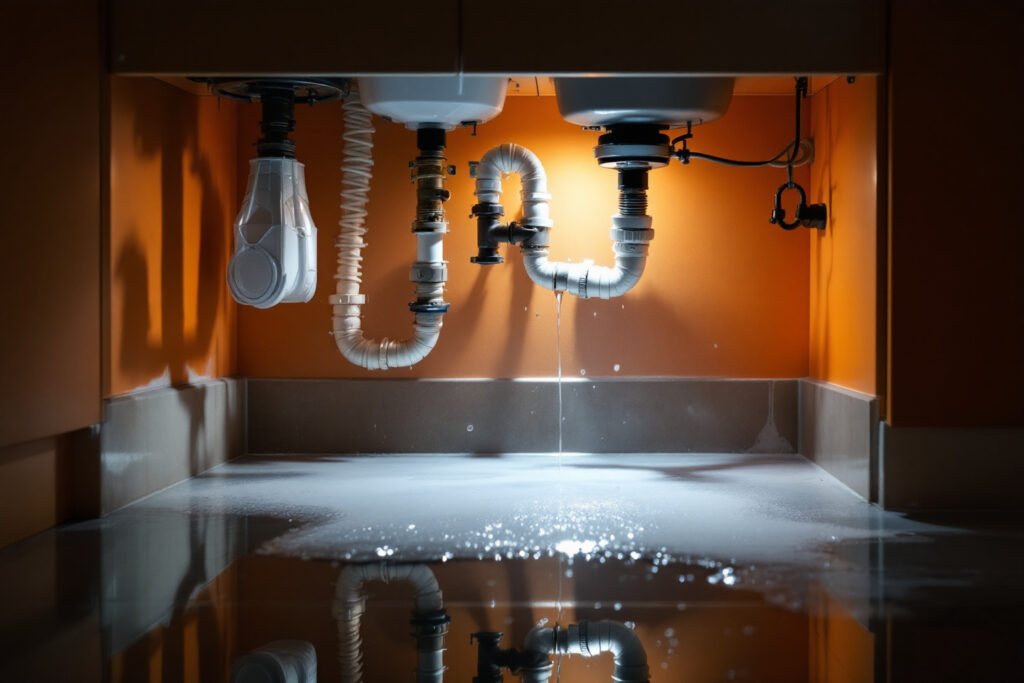It started with a puddle. I was cleaning up after dinner, tossed a paper towel into the trash, and suddenly noticed my socks were soaked. Water was pooling under the sink.
If you’ve ever had your kitchen sink spring a leak out of nowhere, you know how stressful—and messy—it can be. Here’s what I learned (the hard way) and what you can do to fix it fast and prevent further damage.
🛑 Step 1: Stop the Leak and Prevent More Damage
The first rule: don’t panic—but act fast.
✅ Immediate Actions:
- Turn off the faucet immediately.
- Clear out everything under the sink to see where the water is coming from.
- If water is still dripping, place a bucket or bowl underneath to catch it.
- Use towels to soak up any standing water to avoid cabinet damage or mold.
📌 Tip: If the leak continues even after the faucet is off, it could be from a supply line or drain connection.

🔎 Step 2: Identify the Source of the Leak
I was surprised to learn there are several common causes for kitchen sink leaks. Here’s what to check:
💧 Common Leak Points:
- Faucet base or spout – may be loose or have a worn-out O-ring
- Sink drain – the strainer basket or rubber gasket may have deteriorated
- P-trap – the curved pipe under the sink can crack, clog, or loosen over time
- Water supply lines – these are under pressure and may leak if fittings are loose
- Garbage disposal – may leak from seals or cracks in the body
📌 Tip: Use a flashlight and dry paper towel to trace the exact location. Water often drips down and spreads, making the source tricky to find.
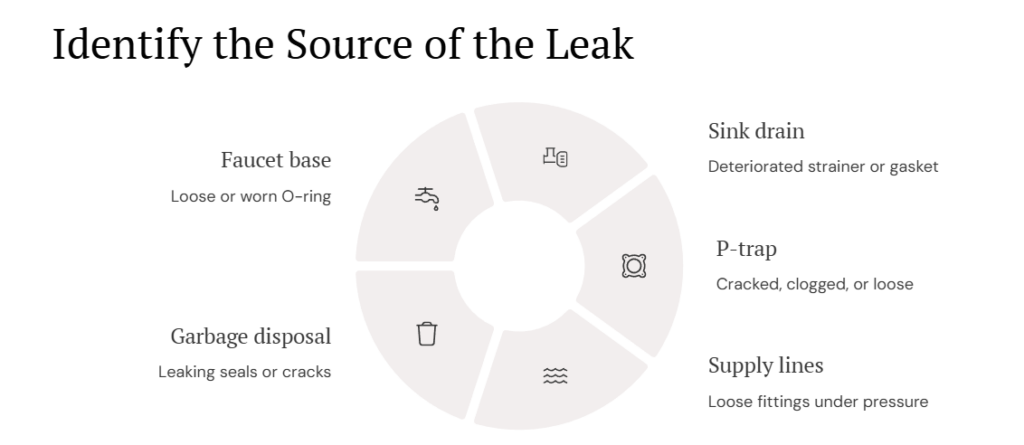
🔧 Step 3: Tighten, Seal, or Replace the Faulty Part
Once I found the source (a loose P-trap connection), the fix wasn’t too difficult. Depending on your situation, here’s what you might need to do:
🛠️ Easy Fixes You Can Try:
- Tighten loose fittings by hand or with a wrench (but don’t overtighten!)
- Replace worn-out gaskets or washers (usually under $10 at any hardware store)
- Use plumber’s tape or joint compound on threaded connections
- Apply plumber’s putty to seal drain flanges or sink strainers
- For cracked pipes or damaged parts, replace them—most are inexpensive and standardized
📌 Supplies to keep on hand:
- Adjustable wrench
- Bucket & towels
- Plumber’s tape
- Replacement washers or gaskets
- Silicone sealant or plumber’s putty
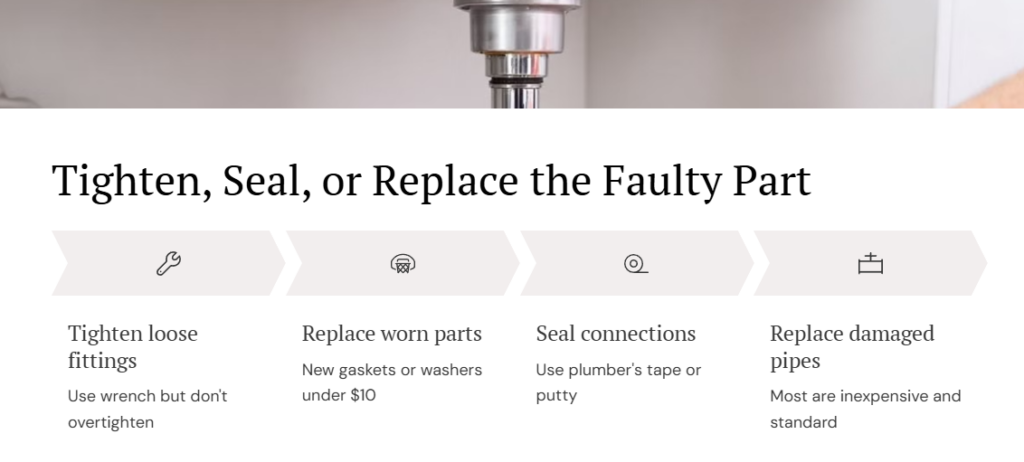
🧽 Step 4: Dry and Disinfect
After fixing the issue, take time to thoroughly dry the cabinet space. Lingering moisture can lead to wood rot or mold.
🧼 Cleaning Tips:
- Use a fan or leave the cabinet open overnight for airflow
- Spray disinfectant or a vinegar solution to prevent mold
- Replace damaged shelf liners if necessary
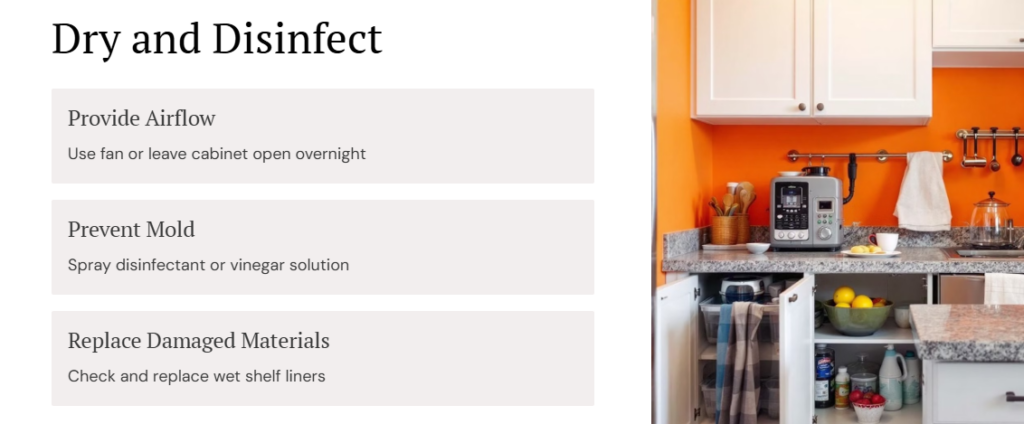
🧠 What I Learned:
- Even small leaks can cause big headaches if ignored.
- A few basic tools and parts can save you from calling a plumber for minor issues.
- Checking under the sink regularly (especially after installing a new faucet or garbage disposal) is a good habit.
🛠️ When to Call a Plumber
If you’re dealing with:
- Water coming from the wall (not under the sink)
- Damaged shut-off valves or copper piping
- Persistent leaking despite multiple attempts to fix
- Water damage or mold you can’t clean properly
Then it’s time to call a professional. You don’t want a minor issue turning into a major repair.
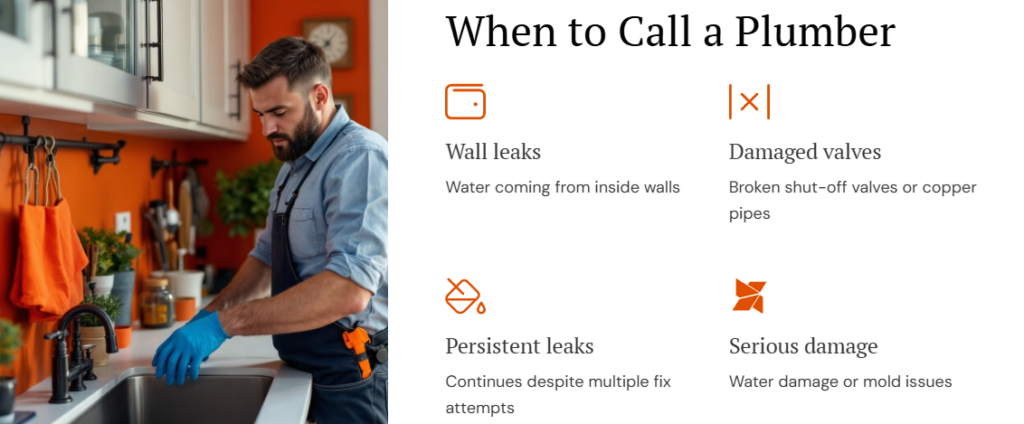
✅Perform Routine Checks
Now, I check under my kitchen sink once a month, just a quick glance to make sure everything’s dry and tight. It takes 10 seconds and gives me peace of mind.
So next time you hear a drip—or step in an unexpected puddle—you’ll know what to do. A calm approach and a few tools can go a long way.
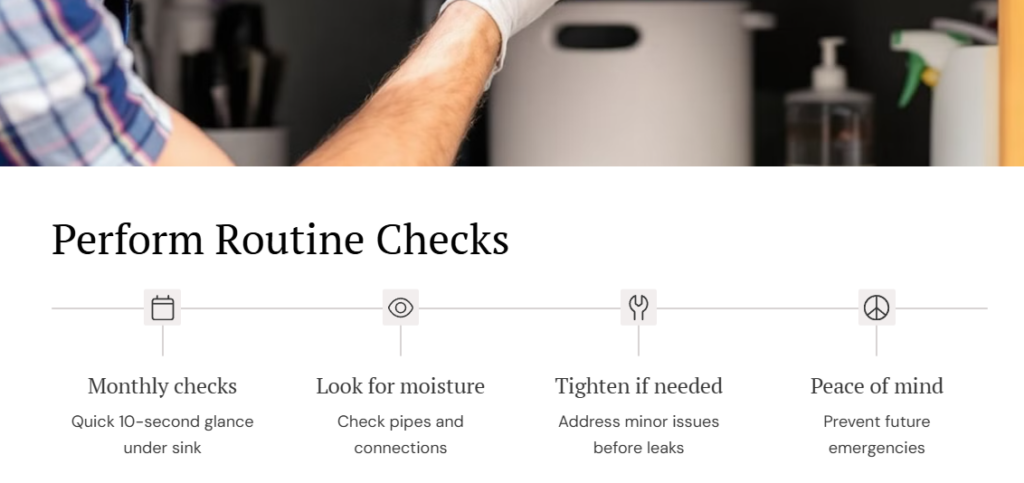
Take a closer look at your home!
- Pre-Summer Home 10 Checklist Before the Heat Kicks In
- Maintenance, Safety, and Smart Tips for Enjoying Your Pool All Year Long 🏊♂️🌴
- Smart Ways to Control Mosquitoes & Insects in Your Yard 🦟🌿
- Grass Types, Care Tips & How to Keep It Green Year-Round
